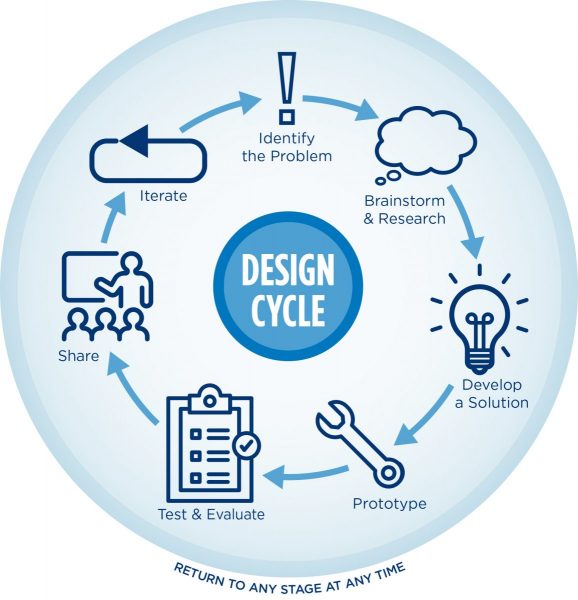The Innovative Leaders Institute pairs aspiring school leaders with veteran STEM school principals, including Larry W. Johnson Jr. Larry is the principal of the Firestone Community Learning Center, the largest school in the Akron Public Schools. Larry was the founding Instructional Leader of the National Inventors Hall of Fame S.T.E.M. High School, recognized as a School of Promise by the state of Ohio two years in a row and a Bronze medalist by News Week top schools in the nation.
Larry has coached and mentored seven different cohorts of STEM leaders and teachers through the Innovative Leaders Institute. We caught up with him to get a more detailed look inside the program. If you’re ready to lead the switch to STEM at your school, apply to join this year’s cohort by March 28, 2022.
Apply by March 28 |
Program details |
What’s your goal as a faculty member of the Innovative Leaders Institute (ILI)?
 My role has been to help participants identify their strengths in the STEM model, brainstorm ways to improve their areas of development, and prototype new ideas for the future. Our goal as a staff is to collaborate with participants to enhance every school’s vision of STEM.
My role has been to help participants identify their strengths in the STEM model, brainstorm ways to improve their areas of development, and prototype new ideas for the future. Our goal as a staff is to collaborate with participants to enhance every school’s vision of STEM.
Why would a seasoned educator participate in ILI?
ILI provides a rich opportunity for leaders to reflect on their practices, examine areas that they hope to grow and improve and collaborate with other practicing STEM leaders. ILI is designed to not only reflect and improve your practice as a leader. It is designed to provide deep collaboration with other leaders, allowing for adjustments in curriculum, professional development, support structures, and mechanisms, increasing partner participation, and identifying ways to strengthen their programming.
What is “disruptive leadership?” What does it support at a school?
Disruptive leadership is rooted in solution-based leading. Disruptive leaders see problems as an opportunity to find a better solution. Often, better or different solutions extend themselves to innovative practices. More than just shaking things up, disruptive leaders are strategic in how they attack and approach solving problems. Disruption allows leaders and leadership teams to challenge the status quo of education and truly focus on authentic learning opportunities. The more authentic the expectation of learning, the more schools disrupt the educational landscape.
Many STEM programs include a focus on problem-based learning (PBL). What do ILI participants learn about PBL?
Many STEM schools utilize PBLs as part of their process of making learning more authentic. PBLs serve a much larger purpose in the learning process. Inquiry learning is at the heart of PBLs, it allows students the opportunity to be more curious about authentic problems in their community or desired career field. ILI participants learn how to structure their programs to facilitate more hands-on learning opportunities. Additionally, participants are able to work through the design process as an intricate part of the process. This focus on process aligns the educators to a more unique approach to learning, versus an outcome orientation.
Even if a school leader understands PBL or any other innovations, we can’t instantly pass that knowledge along to other educators at the school. What does ILI teach about designing professional developments for your staff?
There are three levels of learning for this area, prioritizing, differentiating, and creativity. ILI participants identify what we call “One Thing” – the priority of their program. Not all STEM schools have the same structures that support learning. ILI is a differentiated approach to professional development ensuring that all schools are able to advance their programs to the next level. ILI empowers leaders and teachers to approach professional learning through creativity. Our goal is to model a variety of approaches and encourage participants to make appropriate adjustments for their staff.
Great STEM schools have great partners. What do ILI alumni understand about building partnerships?
Strong STEM schools walk the talk. Collaboration is a huge part of partner interaction. Our ILI participants design and strategize around the needs of the learning needs of their community. Once participants identify how they want to engage partners, they can do so with a comprehensive plan to collaborate and build experiences that extend student learning beyond the classroom.
Apply by March 28 |
Program details |
Across all these elements, is there one idea that runs through everything in ILI?
The one idea or concept that is essential to connecting all of these elements together is the design cycle. Operationalizing the design cycle is essential. Participants learn to harness the creative energy in their organization and lead their staff to see things differently.
